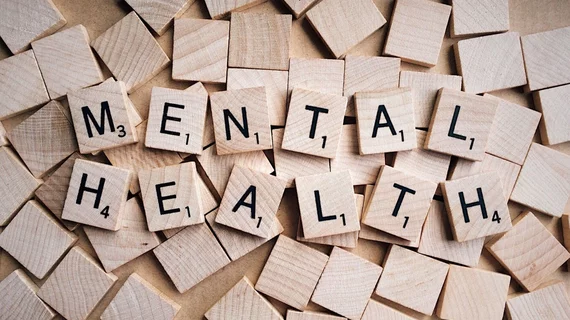Structural neuroimaging data may provide clues into the origins and outcomes of various mental disorders, such as depression and psychosis, based on alterations in brain structure visualized on MRI.
A machine learning algorithm was trained on nearly 600 MRI exams to identify imaging features that might be unique to patients with depression or psychosis, as well as whether these findings held any prognostic value. In doing this, researchers linked lower volumes of gray matter with poorer disease outcomes in patients with depression. Conversely, higher volumes of gray matter indicated that patients were likelier to recover more fully from their mental illness.
“Currently, the way we diagnose most mental health disorders is based on a patient’s history, symptoms, and clinical observations, rather than on biological information,” lead author Paris Alexandros Lalousis, MSc, from the School of Psychology at the University of Birmingham in the United Kingdom, and co-authors wrote. “That means patients might have similar underlying biological mechanisms in their illness, but different diagnoses. By understanding those mechanisms more fully, we can give clinicians better tools to use in planning treatments.”
Researchers used the machine learning algorithm to examine neuroimaging data from around 300 patients with recent onset depression (ROD) and recent onset psychosis (ROP). In addition to identifying important imaging features associated with both mental illnesses, the experts sought to test the algorithm’s utility as a prognostic tool by predicting patients’ outcomes nine months after their initial diagnosis.
Based on their findings, the researchers indicated that participants with lower gray matter volume were more likely to exhibit inflammation on imaging, as well as experience greater cognitive impairment and poorer concentration. The nine-month model, which outperformed traditional diagnostic structures, was highly accurate in predicting that these patients were also less likely to achieve symptomatic remission, the researchers noted.
These findings were externally validated using data from large cohort studies in the U.S. and Germany. Researchers suggested using biological information from neuroimaging as an adjunct to traditional markers, such as symptoms and clinical histories, etc., could help better inform providers on earlier diagnosis and intervention, as well as treatment decisions.
“We found that the longer the duration of illness, the more likely it was that a patient would fit into the first cluster with lower gray matter volume. That really adds to the evidence that structural MRI scans may be able to offer useful diagnostic information to help guide targeted treatment decisions,” the experts wrote.
Read the detailed study in Biological Psychiatry.
More on neuroimaging:
Better neuroimaging guidelines could save practices millions, research shows
MRI/PET scans link brainstem atrophy to dementia symptoms
Researchers use MRI scans to develop a growth chart specific to the human brain
MRI findings associated with poor thrombectomy outcomes after stroke
MRI scans link atypical growth of key brain structure during infancy with autism

